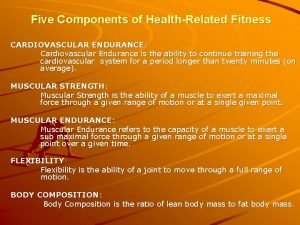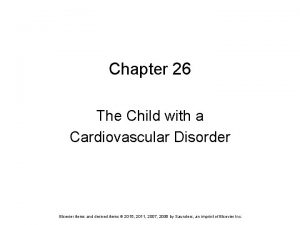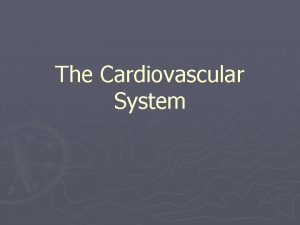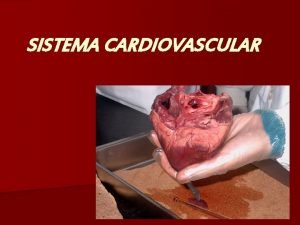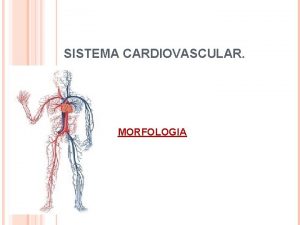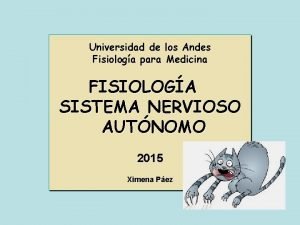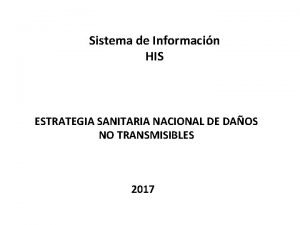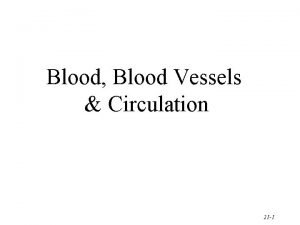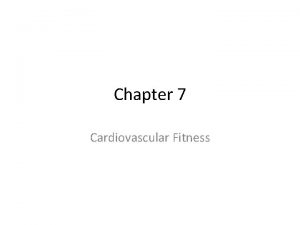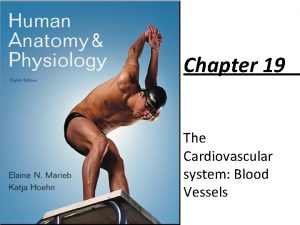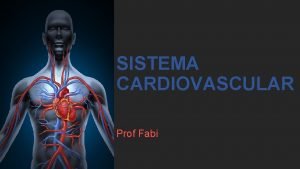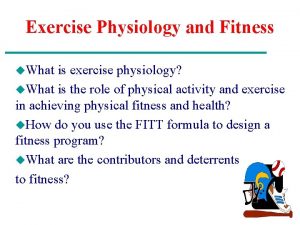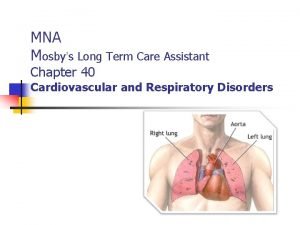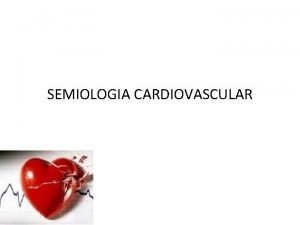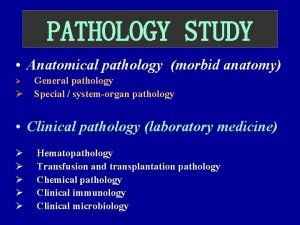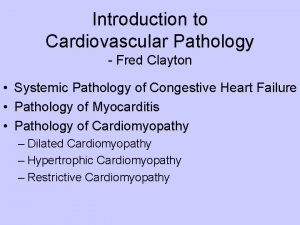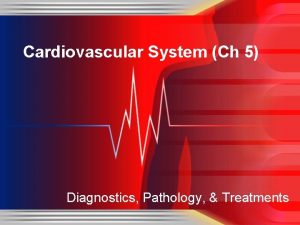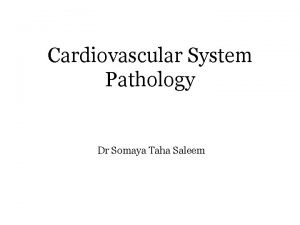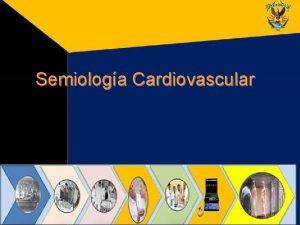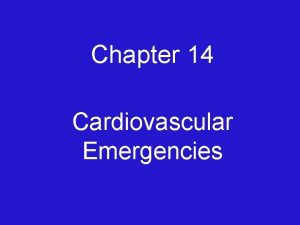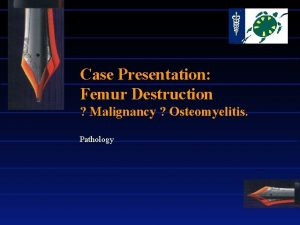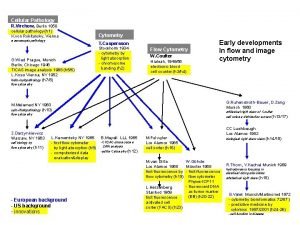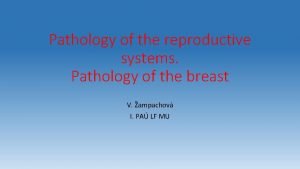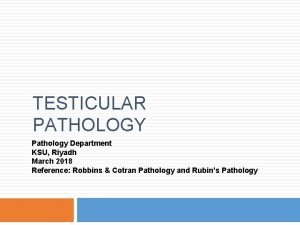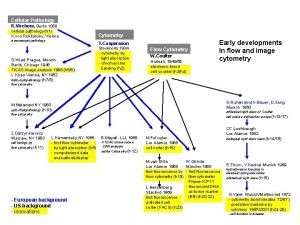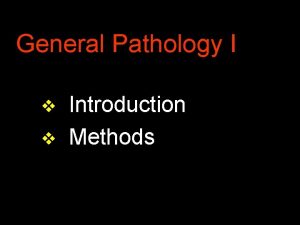Cardiovascular Pathology I Cardiovascular Pathology I Case 1





































- Slides: 37

Cardiovascular Pathology I

Cardiovascular Pathology I Case 1

Normal coronary artery H&E stain Elastin stain

High power

Q 1. Describe the histology of a normal coronary artery. Be sure to describe all of the layers of the artery in your discussion. What is the arrow pointing to on the high power image?

Case History A 57 -year old man has experienced chest pain with exertion for the past year. For example, when he walks up a flight of 10 or more stairs he develops a pain in his chest which subsides within several minutes when he sits down and rests.

Q 1. Develop a clinical differential diagnosis.

The image is that of the patient’s left anterior descending coronary artery

Q 2. Describe the histologic findings in this coronary artery. Q 3. What is your pathologic diagnosis?

Q 4. Name at least 3 modifiable and 3 nonmodifiable risk factors for the development of this condition. Q 5. Correlate the clinical history with the pathology.

Cardiovascular Pathology I Case 2

History A 67 -year old man presented to the emergency department with 10/10 crushing substernal chest pain. The pain was greatest over his left chest and radiated down his left arm.

Q 1. List 5 life-threatening causes of chest pain.

*represents normal myocardium

Cross sections of coronary artery

Q 2. Describe the gross morphologic findings of the heart. Be specific when describing the area to which the large arrow is pointing. What chambers of the heart are labeled A and B?

Q 3. What is your diagnosis? Q 4. Based on the gross findings, when did this event occur? Discuss your rationale.

Q 5. Clinically, what lab tests would confirm the diagnosis? Why? Q 6. Discuss potential complications of this disease process.

Cardiovascular Pathology 1 Case 3

History A 45 -year old woman with diabetes mellitus, type 1 complained of “not feeling well” for several days. She collapses from a cardiac arrest and cannot be resuscitated. An autopsy is performed. The light microscopic appearance of the left ventricle anterior wall and left anterior descending coronary artery are shown in the figures

normal Low power High power


Q 1. Describe the histologic findings of the myocardium. Compare to normal. Q 2. Describe the histologic findings of the coronary artery.

Q 3. What is your diagnosis? Q 4. Based on the histologic findings, when did this event occur? Discuss your rationale.

Q 5. Are the patient’s symptoms typical of this disease process? Provide a rationale to your answer. Q 6. Define the term “vulnerable plaque”.

Cardiovascular Pathology Case 4

History A 27 -year old man presents with shortness of breath which developed 7 days prior and has been steadily worsening. He has no known medical problems and takes no medications. Physical exam reveals jugular venous distention, bilateral basilar lung crackles and lower extremity edema.

Q 1. Develop a clinical differential diagnosis.

An endomyocardial biopsy is performed Low power . High power

Q 2. Describe the histologic findings. Q 3. What is your pathologic diagnosis?

Q 4. What is the most common cause of this entity in the United States? Q 5. Correlate the clinical with the pathologic findings.

Cardiovascular I Case 5

History A 78 -year-old man presents with sudden onset of low mid-back pain. His past history is significant for coronary artery disease and coronary artery bypass surgery. He has a 60 pack year smoking history. On examination, a pulsatile mass can be felt in the lower abdomen. On auscultation of the mass a bruit is appreciated.



Q 1. Describe the characteristic pathologic features of this specimen. Q 2. Correlate the clinical findings with the pathology

Q 3. What is your diagnosis? Q 4. What is/are risk factors for the development of this condition? How do they contribute to its development?
 Best worst and average case
Best worst and average case Bubble sort best case and worst case
Bubble sort best case and worst case Glennan building cwru
Glennan building cwru Bubble sort best case and worst case
Bubble sort best case and worst case Bubble sort algorithm pseudocode
Bubble sort algorithm pseudocode Ambiguous case triangles
Ambiguous case triangles Difference between short case and long case
Difference between short case and long case Crm failure case study
Crm failure case study Average case for binary search
Average case for binary search Chapter 8 cardiovascular system
Chapter 8 cardiovascular system Chapter 13 cardiovascular system
Chapter 13 cardiovascular system Rias cardiovascular
Rias cardiovascular 5 components of health related fitness
5 components of health related fitness Lesson 11 cardiovascular system
Lesson 11 cardiovascular system The child with a cardiovascular disorder chapter 26
The child with a cardiovascular disorder chapter 26 Crash course circulatory system
Crash course circulatory system The cardiovascular system includes the
The cardiovascular system includes the Grande e pequena circulação
Grande e pequena circulação Salud cardiovascular
Salud cardiovascular Pericardio
Pericardio Neuronas sensoriales
Neuronas sensoriales Riesgo cardiovascular por perimetro abdominal
Riesgo cardiovascular por perimetro abdominal Cardiovascular system
Cardiovascular system Chapter 25 assessment of cardiovascular function
Chapter 25 assessment of cardiovascular function Vasomotor center
Vasomotor center National cardiovascular partners
National cardiovascular partners Cardiovascular drugs
Cardiovascular drugs Fitness chapter 7
Fitness chapter 7 Cushing reflex
Cushing reflex Cardiovascular system
Cardiovascular system Lesson 11 cardiovascular system
Lesson 11 cardiovascular system Venule
Venule Medical terminology chapter 5 learning exercises answers
Medical terminology chapter 5 learning exercises answers Veias
Veias Cardiovascular endurance frequency
Cardiovascular endurance frequency Cardiovascular disorders
Cardiovascular disorders Anatomy and physiology unit 7 cardiovascular system
Anatomy and physiology unit 7 cardiovascular system Maniobra de azoulay
Maniobra de azoulay












